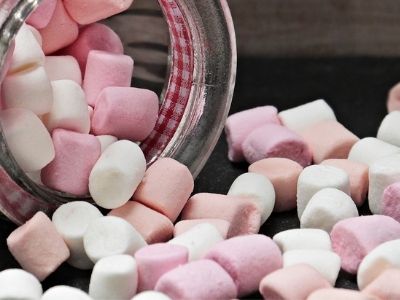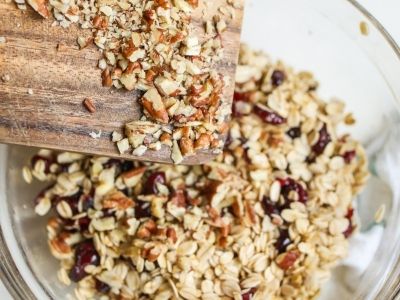Is snacking between meals a good thing? As with most health questions, there isn’t a straightforward answer and there are different opinions. A common view is that having smaller meals with a healthy snack in between is better for weight control than eating big meals. Similarly, that if you don’t eat between meals you may get so hungry that you overeat. But research on this is inconclusive. It’s true that snacks can help to avoid low blood sugar issues, if this is something you have a problem with. Probably the most common reason for snacking is simply that it stops us feeling hungry. No one likes feeling hungry and if our bodies are telling us to eat, then it makes sense that we should.
How to snack healthily
Usually we want snacks to be quick and easy and often we want them on the go. This can make snacking healthily a problem. What should we think about when choosing healthy snacks to go?
Sugar content

Look for snacks with no added sugars. The natural sugar content shouldn’t be too high either.
Gl
GI (glycemic index) and sugar content are related, but not the same thing. The GI of a food is a measurement of how fast its sugar content is digested and absorbed. If a food is high GI, the sugars will be absorbed quickly causing a blood sugar high. This causes increased insulin production resulting in some of the sugars being converted to fat, followed by a rapid blood sugar drop which can give rise to craving more sugar. GI isn’t marked on foods, so it’s not easy to identify low GI snacks. See this post for more info.
Artifical additives and preservatives
Ideally, you should aim to eat foods that have only natural ingredients.
Fat content
Having fat in our diets is essential for good health, but too much fat isn’t good. It’s much more calorie dense than carbohydrate and protein and saturated fats are harmful to our heart and circulatory system.
Vitamins and minerals
A wide range of vitamins and minerals are needed for good health. Having fruits, vegetables and nuts in your snacks will help to boost your intake.
Complex carbohydrate

Complex carbs become unfashionable in the health and fitness world years ago, despite extensive research showing that they should form a substantial part of a healthy diet. They are made up of long sugar chains – like pasta, rice, bread and oats. Because the sugars are in long chains, they take longer to digest and so give a slow energy release. Main meals should have plenty of complex carbs, but obviously foods like pasta and rice aren’t ideal for quick and easy snacks. Convenient in-between meal choices include breads and low sugar cereal snacks.
Protein

We need protein for our bodies to make new cells. It also helps to keep us feeling full and slows down carbohydrate digestion. However, eating a high protein diet isn’t necessary unless you are on an extreme training regime. Excess protein is just be converted to carbohydrate or fat. The recommendation is for 10-15% of our calories to come from protein. Main meals usually have a good quantity of protein, from foods like meat, fish, eggs, dairy, beans and soy products, so snacks don’t need to be high protein unless your fitness training requires it. Good protein sources for snacks include nuts, seeds and yoghurt.
Fibre
Fibre also slows down carb digestion and helps us to feel full. Its main benefit is in helping to keep the digestive system functioning properly. All fruit, veg, nuts and seeds have fibre. So do complex carb foods, although the refined white versions have much less.
